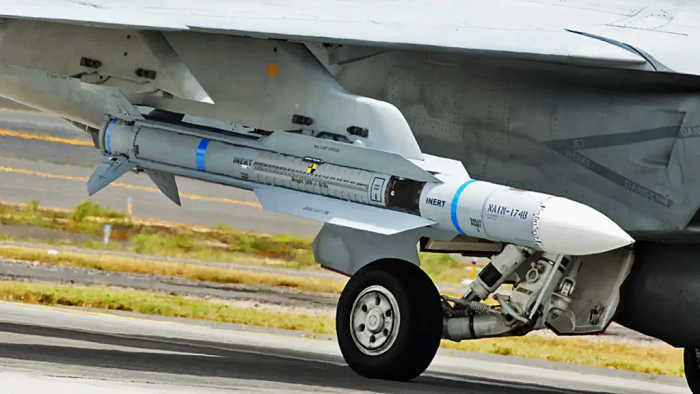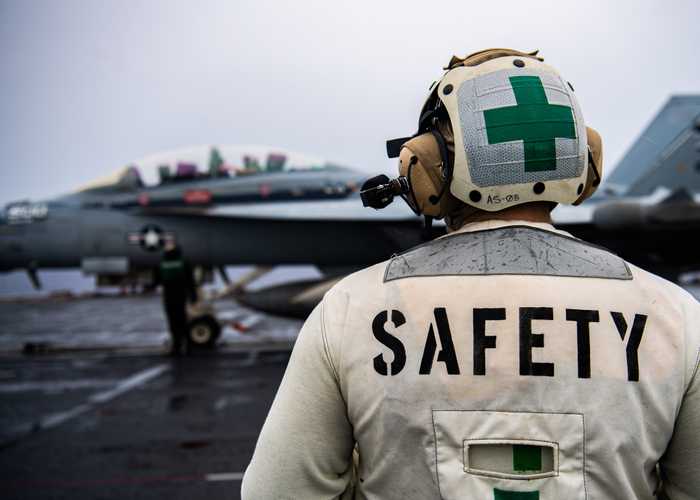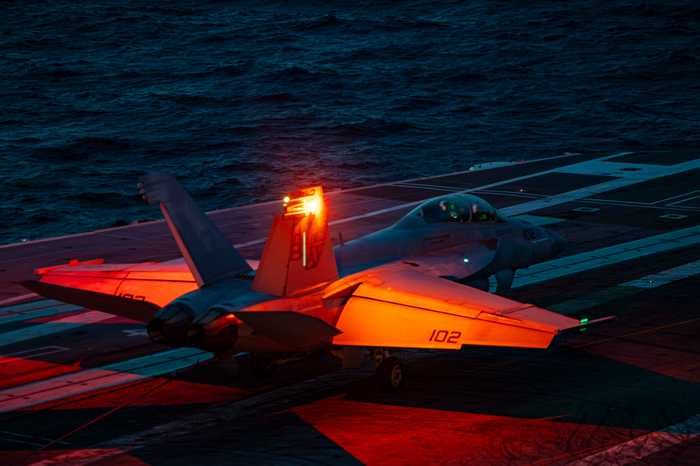Published 13:00 IST, August 29th 2024
How AIM-174B missile, onboard the US Navy's F-18 Super Hornet Is A Gamechanger in Indo-Pacific
The U.S. Navy's deployment of the AIM-174B missile aboard F-18 Super Hornets is being viewed as a strategic game-changer in the Indo-Pacific.
- Defence
- 4 min read
Washington, USA – The U.S. Navy's recent deployment of the AIM-174B missile aboard its F-18 Super Hornet aircraft is hailed as a potential game-changer in the Indo-Pacific region. This new, extremely long-range air-to-air missile, developed from Raytheon's SM-6 air defence missile, could neutralize China’s advantage in aerial reach, according to military experts.
The AIM-174B, officially acknowledged in July, stands out for its exceptional range, reportedly capable of striking aerial targets up to 400 kilometres (250 miles) away. This capability far surpasses that of the AIM-120 AMRAAM, the current standard U.S. long-range missile, which has a maximum range of approximately 150 kilometres (93 miles). The AIM-174B’s extended reach allows U.S. aircraft to engage threats from a safer distance, keeping critical assets like aircraft carriers out of range of Chinese anti-ship missiles.
Strategic Advantage in the Indo-Pacific
Experts believe the introduction of the AIM-174B could significantly alter the balance of power in the Indo-Pacific. The missile’s ability to outrange China's PL-15, carried by the J-20 stealth fighter, enables U.S. forces to maintain a tactical advantage, particularly in contested regions like the South China Sea. The missile’s range not only allows for pre-emptive strikes on high-value Chinese targets, such as command-and-control aircraft but also reduces the risk to U.S. carriers operating within the first island chain—a region stretching from Indonesia to Japan.

Chieh Chung, a researcher at the Association of Strategic Foresight in Taipei, remarked, "The United States can ensure the safety of their important assets, such as carrier groups, and launch long-range strikes on PLA targets. The AIM-174B lets the U.S. push further into contested areas, potentially changing Chinese behaviour."
Rising Tensions Prompt Raising the Stakes
According to a report by Defence News, the introduction of the AIM-174B comes during heightened tensions in the Indo-Pacific. The U.S. and China have been at odds over various issues, including territorial disputes in the South China Sea and Taiwan's security. The presence of the AIM-174B in the U.S. arsenal could deter Chinese aggression by raising the stakes in any potential conflict.

Kelly Grieco, a senior fellow at the Stimson Center, pointed out that the AIM-174B addresses a crucial gap in the U.S. military’s capabilities. "With the advent of Chinese stealth aircraft and the PL-15 missile, the U.S. needed a missile that could outrange and outmanoeuvre these threats. The AIM-174B does just that," Grieco said.
Operational Flexibility
The AIM-174B’s development as a derivative of the SM-6 air defence missile offers several logistical advantages. The missile can be produced using existing production lines, avoiding the need for new manufacturing infrastructure. Moreover, its compatibility with the F-18 Super Hornet, operated by both the U.S. and Australian militaries, enhances the missile’s operational flexibility in joint missions.
Australia, a key U.S. ally in the region, could also benefit from the deployment of the AIM-174B. The missile’s integration into Australian forces would bolster their ability to project power and contribute to regional security. An Australian defence ministry spokesperson confirmed that the country is closely monitoring the capabilities of the AIM-174B for potential future acquisition.

The deployment of the AIM-174B is expected to have far-reaching implications for regional stability. By extending the reach of U.S. airpower, the missile could deter China from aggressive actions, particularly in the South China Sea. The U.S. Navy's ability to strike from a greater distance complicates Chinese military planning, forcing Beijing to reconsider its strategy in the region.
A senior U.S. defence analyst, speaking on condition of anonymity, emphasized the missile's strategic impact. "The AIM-174B could force China to pull back its high-value aircraft, reducing their effectiveness in a conflict scenario. This missile changes the calculus for any regional confrontation," the analyst said.
While the AIM-174B is currently operational with the U.S. Navy, its future role in the arsenals of other allied nations, including Australia, remains under consideration. The introduction of the AIM-174B is a clear indication of the U.S. military's focus on maintaining dominance in the Indo-Pacific. As the region becomes increasingly contested, the missile's long-range capabilities will be a critical factor in shaping the future of regional security dynamics.
Updated 13:00 IST, August 29th 2024